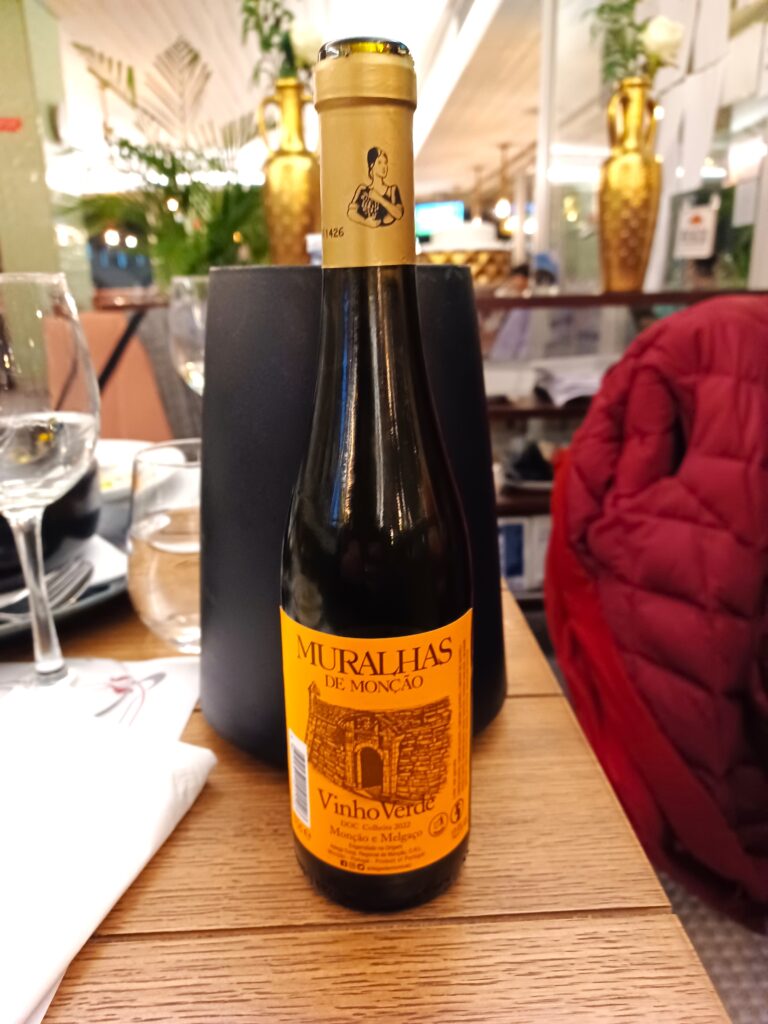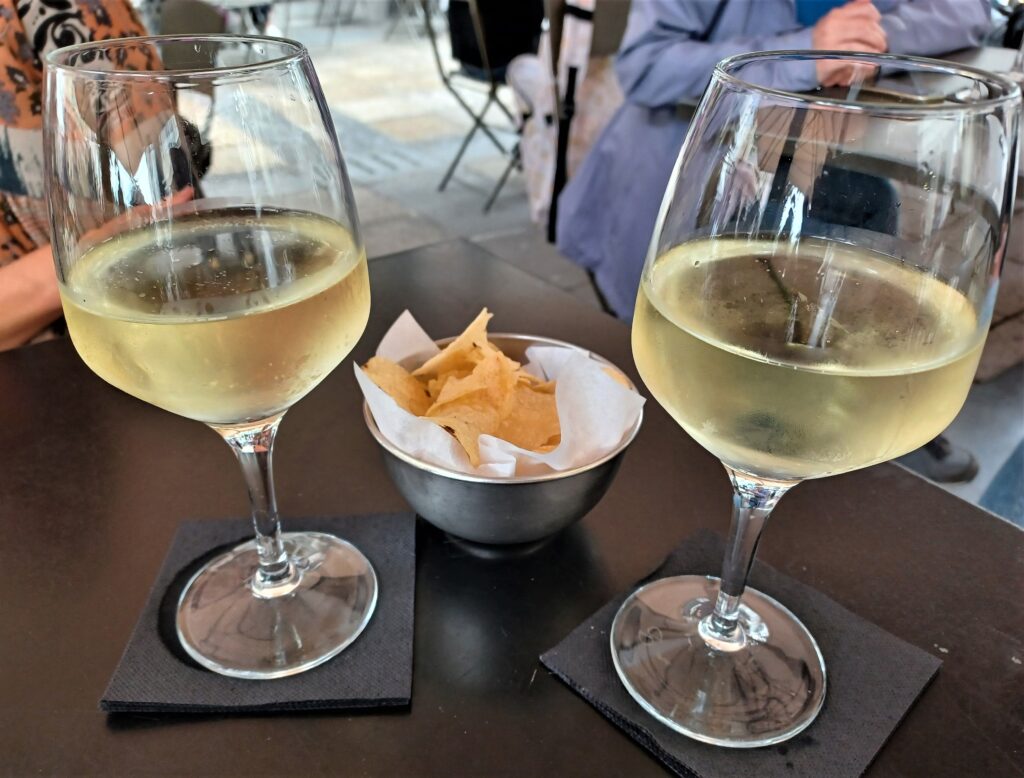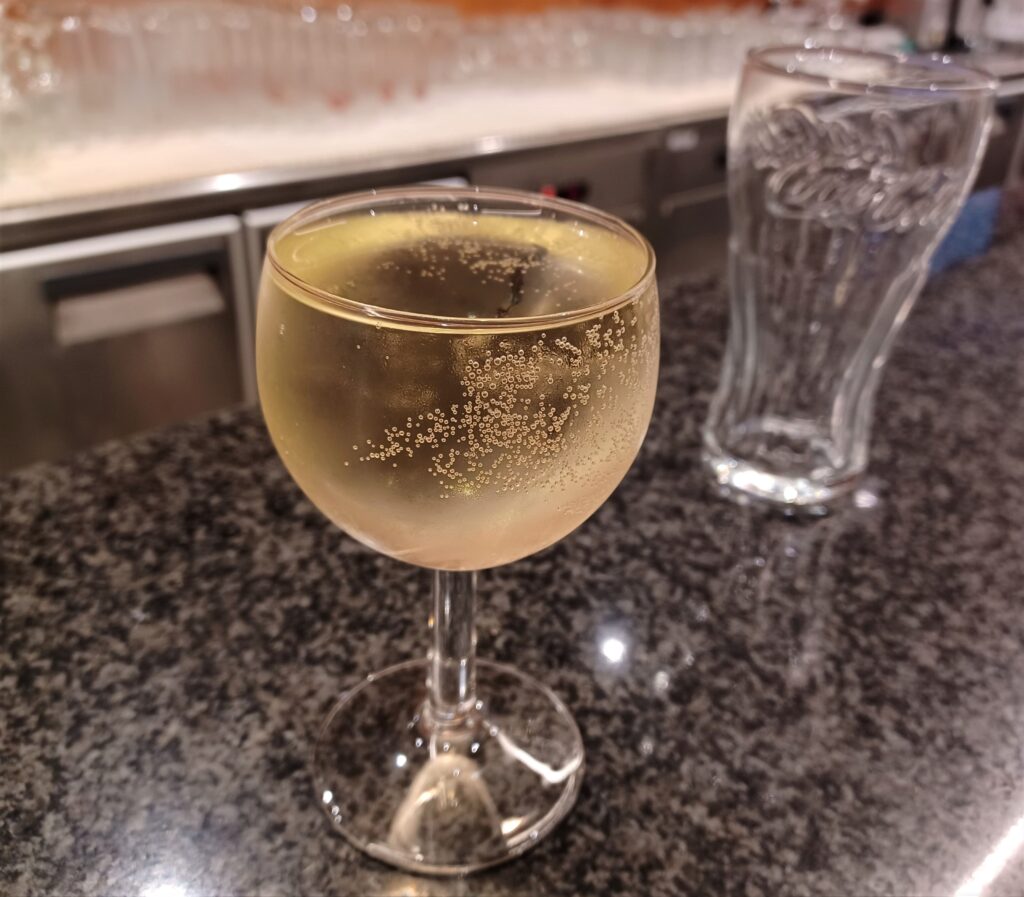The Minho Region of northern Portugal is famous for Vinho Verde. Translated to “Green Wine” the name doesn’t refer to the color of the grapes, but instead the age of the wine as Vinho Verde is typically aged only 6 to 9 months.
Vinho Verde origin story

2,000 years ago, the Romans planted grape vines and made wine in the region where present-day Braga, Portugal is located. In the 9th century CE, a winery was donated to a convent about 25 miles east of Porto. After that, encouraged by tax breaks, religious orders in this part of Portugal began planting vines.
In the 16th century, corn became very important in the Minho Region. As a result, vineyards were torn out and the New World crop was planted in place of grapes. Vines were relegated to the perimeter of properties where the vines grew on fences and up trees, the so-called enforcado vine method. This necessitated the use of ladders to harvest the grapes, a practice that has fallen out of favor in the era of modern viniculture, though some farmers still grow grapes this way.
Vinho Verde may have been exported as early as the 12th century. By the 18th century John Croft (of Croft Port Wine fame) was exporting Vinho Verde (and other wines) to England.
Vinho Verde became an officially demarcated wine making region in 1906.Today, wine is big business in the Minho region accounting for almost 10% of the wine production in Portugal although the number of producers has fallen by almost 75% in the past 40 years as smaller vineyards are gobbled up by larger winemakers and real estate development.

Where to get Vinho Verde in Portugal
The climate of the Vinho Verde region is humid and cool, unlike the nearby Douro Valley which is hot and dry.
The vast majority (almost 85%) of Vinho Verde is white, though there are some red and rose bottles. The most popular grapes for white Vinho Verde are Alvarinho (lower yields, higher alcohol content) and Loureiro.
Traditionally, Vinho Verde’s characteristic effervescence came from malolactic fermentation. Today, carbonation is usually added after the fact, a more economical method.
I’ve complained about the lack of wine bars in northern Portugal (outside of Porto, which has many), While most restaurants only have one selection of red and white by the glass, there is a workaround. Half bottles are available on many menus, especially in the port city of Viana do Castelo. A half bottle is about 2.5 glasses, making it nice to sample with 2 people. Or, with a larger party, you can getmultiple half bottles and try a few different wines. One of my favorite wine lists is at the excellent traditional restaurant Casa de Pasto Maria de Perre in Viana.

In Braga, restaurant Anjo Verde has a nice wine list. Local cafe Bota Fogo has Vinho Verde on tap. Bottle shops, like Vinho e Paladares, have a wide selection. Corriqueijo is a cheese shop with an excellent selection as well.
In Porto, Wine Quay is my favorite bar. They have amazing views over the river, not to mention their excellent wine list. The Wine Box also has a huge selection of bottles and you can get a very night flight to sample.
Vinho Verde is also one of the varieties you can find at most good wine shops in the U.S.
About the Author

Brent Petersen is the Editor-in-Chief of Destination Eat Drink. He currently resides in Setubal, Portugal. Brent has written the novel “Truffle Hunt” (Eckhartz Press) and the short story collection “That Bird.” He’s also written dozens of foodie travel guides to cities around the world on Destination Eat Drink, including in-depth eating and drinking guides in Portugal for Lisbon, Porto, Sintra, Évora, Braga, Loulé, Almada, Monsaraz, and Batalha. Brent’s podcast, also called Destination Eat Drink, is available on all major podcasting platforms.
